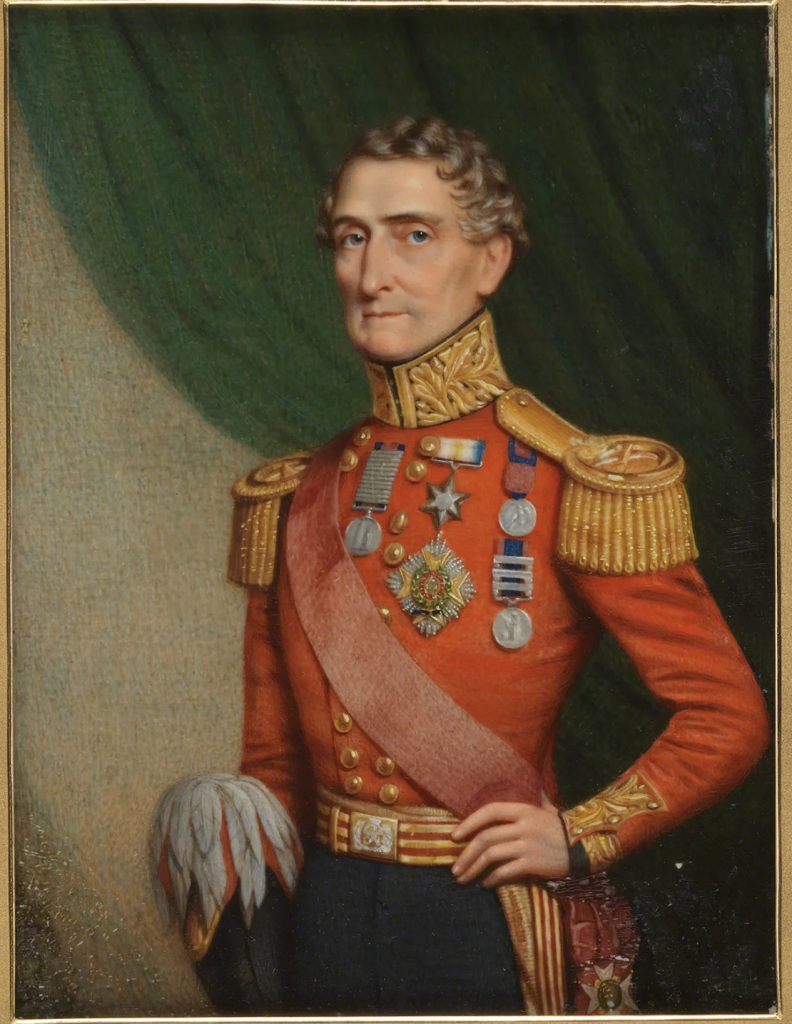ANGLOSIKH WAR I, 1845-46, resulting in the partial subjugation of the Sikh kingdom, was the outcome of British expansionism and the near anarchical conditions that overtook the Lahore court after the death of Maharaja Ranjit Singh in June 1839. The English, by then firmly installed in Firozpur on the Sikh frontier, about 70 km from Lahore, the Sikh capital, were watching the happenings across the border with more than a neighbour`s interest. The disorder that prevailed there promised them a good opportunity for direct intervention. Up to 1838, the British troops on the Sikh frontier had amounted to one regiment at Sabathu in the hills and two at Ludhiana, with six pieces of artillery, equalling in all about 2,500 men.
BAGHEL SINGH (d. 1802), who succeeded in 1765 Karora Singh as leader of the Karor singhia misi or chief ship, is celebrated in Sikh history as the vanquisher of Mughal Delhi. A Dhalival Jatt, Baghel Singh arose from the village of Jhabal, in Amritsar district, to become a formidable force in the cis Sutlej region. According to Syad Muhammad Latif, he had under him 12,000 fighting men. As well as being a soldier, he was an adept in political negotiation and was able to win over many an adversary to his side. The Mughals, the Ruhilas, the Marathas and the English sought his friendship.
CAMPBELL, WILLIAM (d. 1866), a Scotsman, who came to Lahore in September 1828 and was employed in the Sikh cavalry and given command of a regiment of 1200 horse. He soon gained the favour of Maharaja Ranjit Singh, but was dismissed from the service in August 1829 on a charge of misbehaviour towards a woman, and sent across the River Sutlej under an escort. Later, he served the Afghan rulers. He died in Kabul in 1866.
CHET SINGH, military commander, engineer and a kardar, i.e. a revenue officer, under Maharaja Ranjit Singh. In 1831 he became engineer in charge for constructing a bridge over the River Sutlej for the Ropar meeting between Maharaja Ranjit Singh and Governor General William Bentinck. He constructed another bridge at Harike in 1837 to enable the British commanderin chief to cross over the Sutlej for his visit to Lahore. Earlier in 1833 he was appointed kardar of the cisSutlej estates of the Maharaja. In 1835, he was deputed to Anandpur to settle the dispute between the local Sodhi factions.
CHUHAR SINGH, owning allegiance to the Shahid misi, was a close relation of the Bhangi sardar, Rai Singh, the conqueror of Jagadhri and Dialgarh. He received the Jarauli area as his share of the spoils after the sack of Sirhind in January 1764. He retained ten villages for himself and made over the rest to his deputies. Returning to Amritsar, he held charge of the Shahid Buriga for many years.
Discover Kahn Singh's journey from Jai Singh Kanhaiya to the irregular cavalry officer under Ranjit Singh, fighting key battles and serving under Desa Singh Majithia.
Explore the legacy of Sir Harry Smith, a key commander in the First Anglo-Sikh War, and his pivotal role in battles like Ferozeshah and Alival.
Discover Sujan Singh's role in 1764's Sirhind partition and his lasting legacy in the Punjab region. Learn about the territories he and his brothers secured.
Discover the legendary exploits of Tara Singh Ghaiba, a master strategist and leader of the Dallevalia clan whose fearless conquests reshaped Punjab's history.
- 1
- 2



